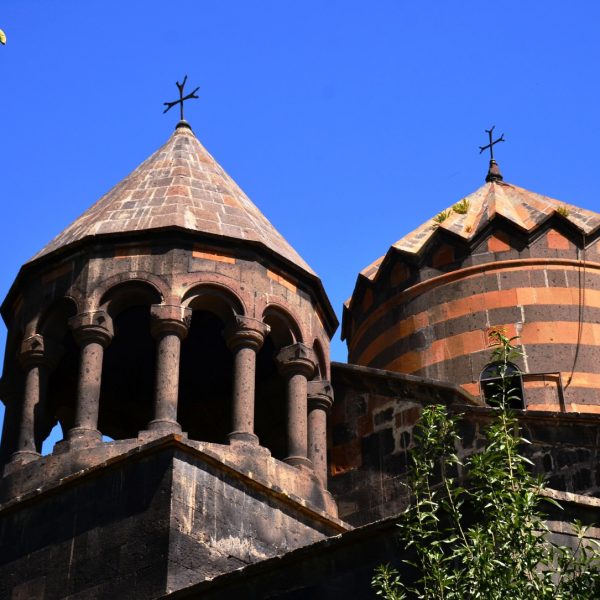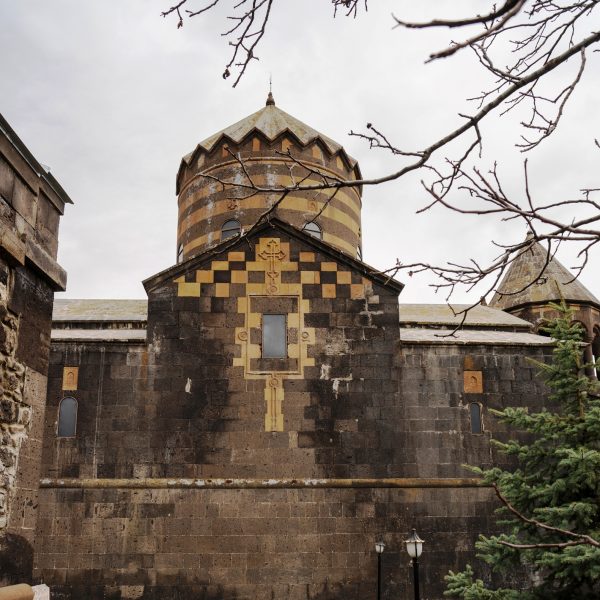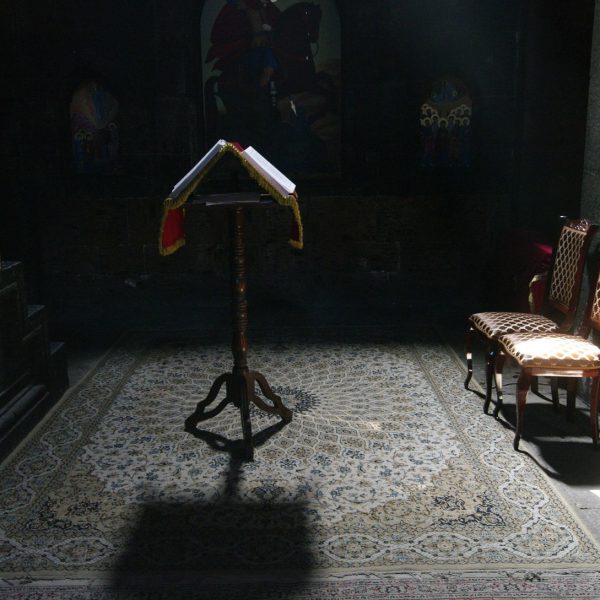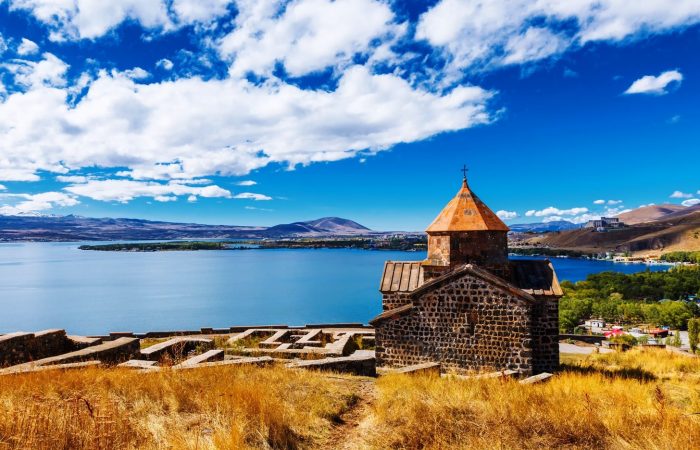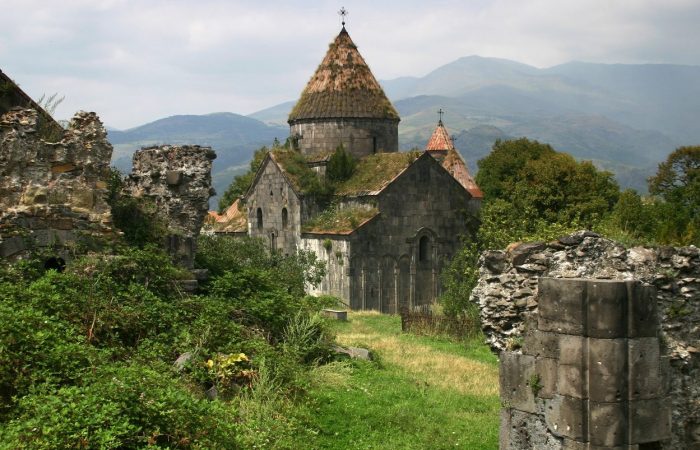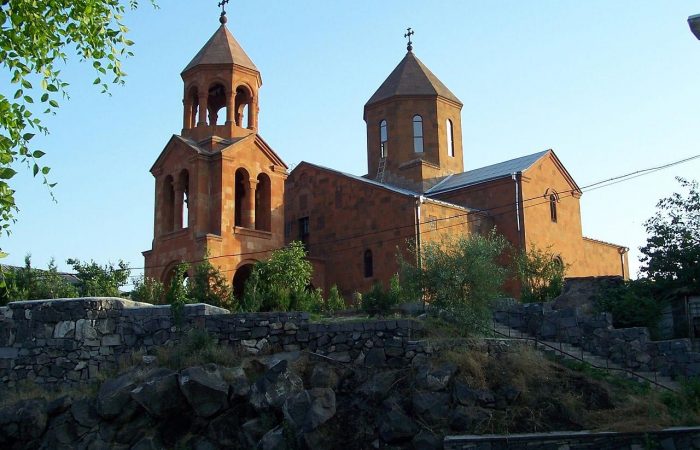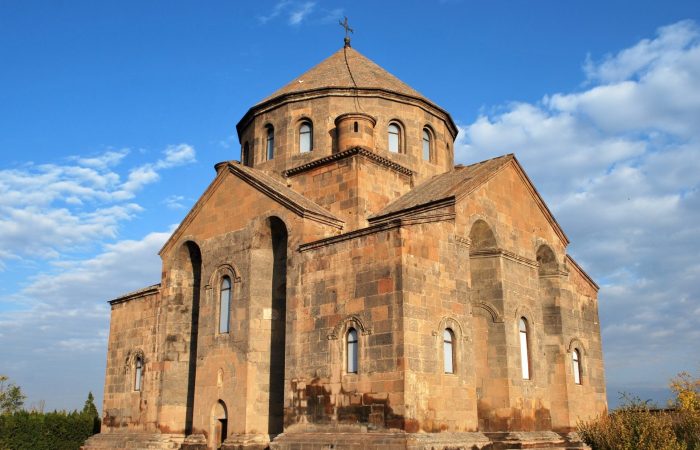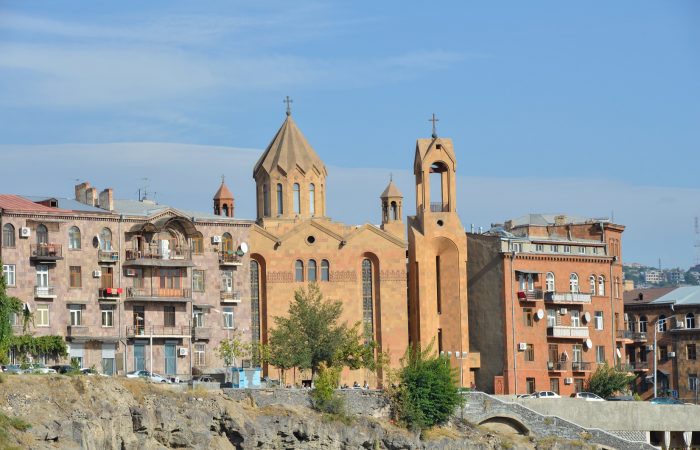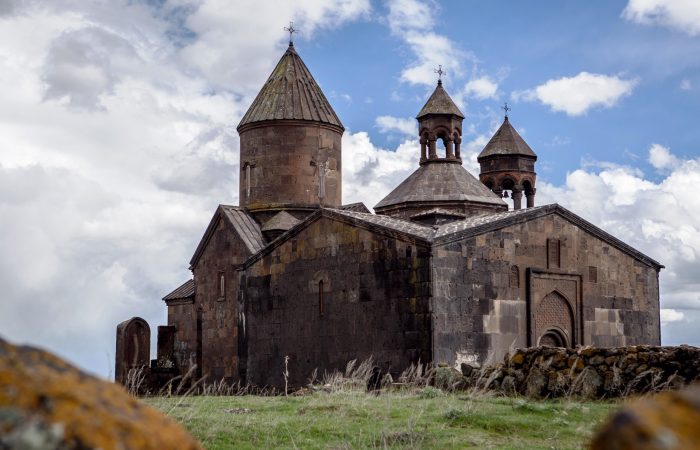Mughni Church: General
Situated in the village of Mughni, the Church of Saint Gevorg was built in the 14th century and was completely renovated in the 17th century. The architects of the church were Sahak Hizanetsi (died in 1666) and his student Murad.
In the Middle Ages the church was rather popular due to the relics of one of the most popular Christian saints, the relics of Saint Gevorg being preserved there. The Church of Mughni was first mentioned in the notes of two manuscripts copied in 1278s and 1280s. Interestingly, close to the relics there is the eternal flame where only those who bear the name Gevorg are allowed to enter and pour oil on the fire.
Who was Saint Gevorg?
Saint Gevorg (George) is one of the saints of the Armenian Church. He was a Roman soldier. The story has it that the Roman Emperor Diocletian issued an edict according to which all the Christian churches and everything Christian-related was to be destroyed. At seeing the edict, Gevorg tore it. Afterward, he confessed about his Christian faith and for that he was jailed and tortured for seven years.
It is said that the emperor sent a lady to seduce him, while it turned so that she failed and was herself in the end converted to Christianity. The lady was not the only one; during those seven years many people were converted. After seven years, Gevorg was beheaded.
Mughni Church: Rebirth
Built in the 14th century the church of Mughni was reborn in the 17th century. First off, father superior bishop Martiros built a new church in the place of the old one. It was a four column church with adjacent buildings and a fence. The church, however, didn’t have a long life as it was made of rough stones. Later on the new father superior of Mughni razed the church to the ground for the purpose of building a new church there. With the assistance of Catholicos Hakob Jughayetsi (Hakob of Jugha) the construction of a new church was launched, which was completed in 1670.
Mughni Church: Structure, Architecture
Mugni Church is located in the center of a fenced complex adjacent to which other buildings among them the refectory and the storehouse can be found. The church is made of black and yellowish-red tufa stone. From the western side there is the three-arch open hall on the middle part of which the belfry’s rotunda rises. The church has a large and high prayer hall with a dome coming with the diameter of 5.67 meters. Frescoes dating to the 17th century can as well be seen in the church.
Interestingly, unlike other medieval churches the windows of which open in all four directions, the windows of Mughni Church somewhat deviate from that set “rule.” Also, above some of the windows there are the symbols of the four gospels (Human/Angel, Lion, Ox, Eagle).
Mughni Church: Khatchkars
There are several khatchkars (cross-stones) in the territory of Mughni Church. The oldest khatchkar dates to 932, while the newest to 1975. Interestingly, the newest khachkar was covertly placed during the night, and it is yet unclear who exactly did that.
Mughni Church: Interesting Facts
- There used to be a secret one kilometer road stretching from River Qasagh to Mughni. It served as a road to bring water to Mughni, and also when in danger, to flee and save the manuscripts.
- The Church of Mughni used to be a sacred place. People suffering from various health conditions used to go there believing they would be cured. Notably, even Muslims have visited the church and made sacrifices.
- There is a Sunday school in the church.
- A newspaper’s being published there.
- Presently every year the Gospel of Shurishkan is being brought to Saint Gevorg Church. In case you don’t know, the Gospel was written in 1498. The 322-page gospel has passed a long way and during 1603-1604 invasions it was taken to the village of Shurishkan, Persia. The gospel was hidden in the territory of a monastery, where it remained for 370 years. It is said that from the place where it was hidden water started to flow and the water is believed to cure. The Gospel was popular with both Christians and Muslims. Since 1971 the Gospel has been sheltered in Matenadaran. Note that the Gospel is taken to Mughni Church on the Sunday following the Resurrection of Jesus Christ. The Gospel was first taken to the church in 2002. A dense crowd of people from various regions of Armenia as well as Persia came to see it.
- In the 19th century the church was a pilgrimage site for Georgians and Persians.
- On the last Saturday of September the day of Saint Gevorg is celebrated in the church.
- The last interesting thing might interest the lovers. The church has preserved one very beautiful tradition – before turning to their parents, lovers visit the church asking for blessing from Saint Gevorg.
Mughni Church is worthily one of the most impressive structures of medieval Armenia and it is a must visit. It’s a religious site where you never know what miracles can happen to you, just have faith and arrange your time so as to pay a visit to it.

